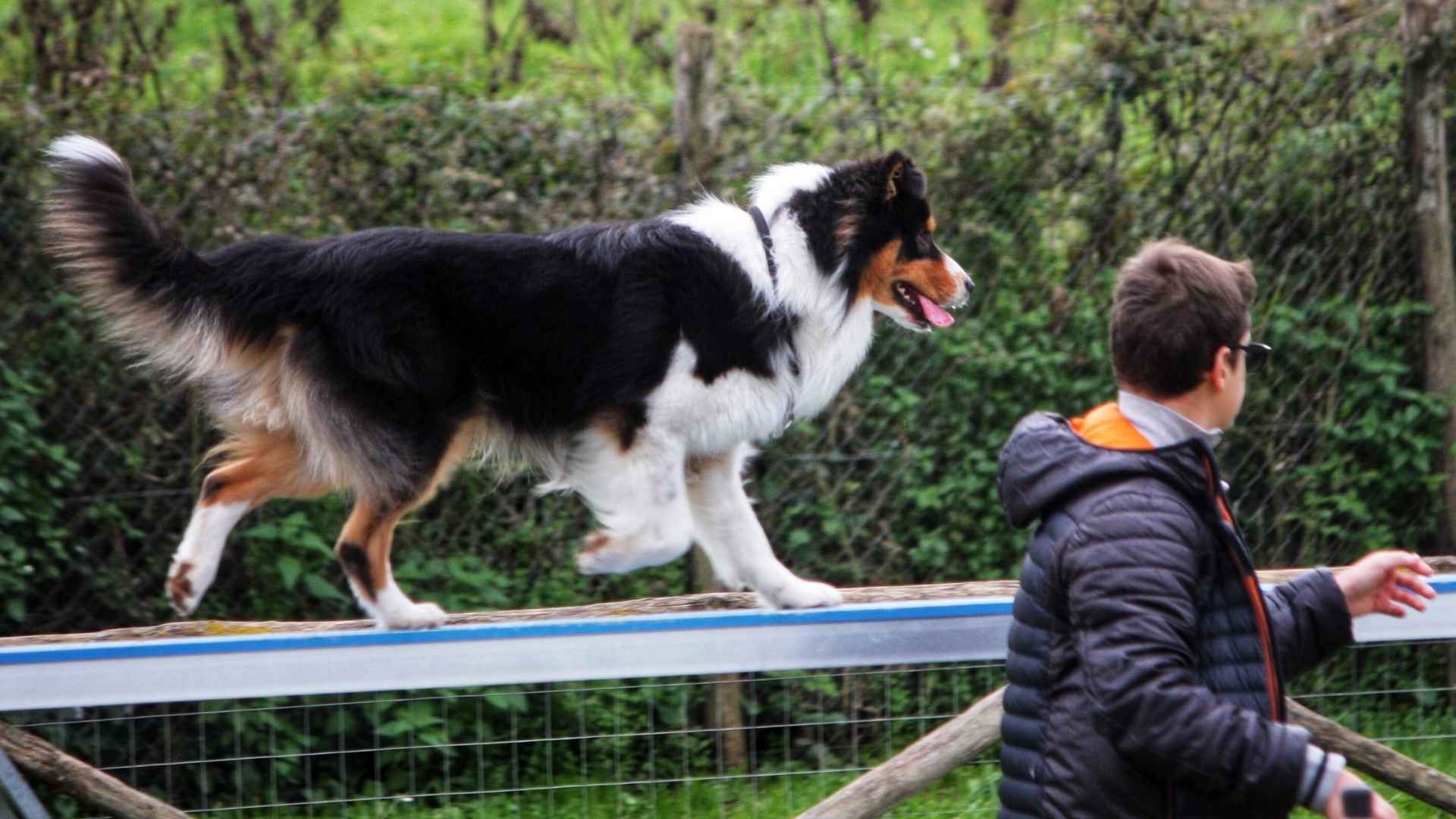In the world of dogs, intelligence comes in many forms—some pups excel at solving puzzles, others pick up on human emotions effortlessly, and a select few stand out for their incredible learning speed.
These impressively quick learners don’t just follow basic commands—they absorb new skills with lightning-fast precision and adapt seamlessly to new routines. Their ability to understand, respond, and retain training makes them ideal for everything from obedience competitions to family companionship.
Whether you’re seeking a canine partner for agility trials, a service dog who can grasp complex tasks, or a loyal friend who can keep up with an active lifestyle, selecting a quick-learning breed can make all the difference. These breeds are often eager to please, highly observant, and incredibly responsive to positive reinforcement.
In this article, we’ll introduce you to some of the most impressively fast-learning dog breeds. From herding champs to sporting stars, these dogs combine mental agility with a strong work ethic—making them not only smart but also remarkably dependable companions.
Dog Breeds That Are Impressively Quick Learners
1. Border Collie
Originally developed along the border between Scotland and England, the Border Collie—also known as the Welsh Sheepdog, Highland Collie, or Scotch Collie—is a medium-sized herding breed celebrated for its boundless energy and unmatched intellect. Males typically stand 18–22 inches tall and weigh between 30–55 pounds.
With a lifespan of 12 to 15 years, Border Collies are known for their sharp problem-solving skills, agile bodies, and weather-resistant double coats.
WebMD notes that their coat colors can vary and include shades such as black, black-and-tan, and reddish-brown. As one of the most intelligent dog breeds, they excel in agility, obedience, and herding trials, often mastering complex commands with minimal repetition.
Temperament
These affectionate dogs are intensely loyal and highly responsive, often forming deep bonds with their owners. They thrive on mental stimulation and are happiest when given a job to do. These dogs are alert, focused, and eager to please—traits that make them quick learners in training settings.
Despite their drive and independence, they remain affectionate and enjoy interactive play, making them fantastic companions for active families who can meet their need for both physical and mental exercise.
Fun Fact: A Border Collie named Chaser famously recognized over 1,000 words, earning her the title of “the world’s smartest dog”.
2. Golden Retriever
The Golden Retriever, affectionately known as the “Golden,” originated in 19th-century Scotland as a gundog bred to retrieve waterfowl. This sturdy sporting breed stands between 21.5 to 24 inches tall and typically weighs 55 to 75 pounds.
Its dense, water-resistant golden coat and strong build are complemented by an expressive face and friendly demeanor. The AKC states that these dogs are dedicated and capable in roles such as hunting, fieldwork, guiding the blind, and search-and-rescue. They also thrive in obedience and other competitive activities, all while displaying a joyful and affectionate nature when off duty.
First exhibited in England in 1908 and officially recognized by the American Kennel Club in 1925, the Golden Retriever has since become one of America’s most beloved breeds, consistently praised for its loyalty, athleticism, and willingness to work.
Temperament
Golden Retrievers are the embodiment of gentle intelligence. Their easy-going and enthusiastic nature, paired with a deep desire to please, makes them standout learners in obedience, service roles, and agility. Goldens are patient with children, warm with strangers, and exceptionally devoted to their families.
Their eagerness to engage and their sensitivity to human emotions allow them to thrive in both social and working environments. With consistent positive reinforcement, they quickly absorb commands and routines, making them ideal companions for families and first-time dog owners alike.
Did you know? All modern Golden Retrievers can trace their lineage back to a litter born in 1868 at Guisachan House in the Scottish Highlands.
3. Labrador Retriever
Recognized by the American Kennel Club as part of the Sporting Group, they stand between 21.5–24.5 inches tall and weigh 55–80 pounds. PetMD mentions that Labrador Retrievers have a strong affinity for water and originally worked alongside fishermen, as noted by The Labrador Retriever Club.
Their short, dense coat comes in black, chocolate, or yellow, and their famed “otter tail” is thick at the base, aiding them in swimming. Labs have a life span of 10–12 years and are widely admired for their robust build and versatility in various roles—from hunting companions to service animals.
Temperament
Labradors are cheerful, affectionate, and outgoing. Their sociable disposition, combined with a strong eagerness to please, makes them one of the most trainable breeds. Highly responsive to positive reinforcement and food motivation, they quickly master basic and advanced commands alike.
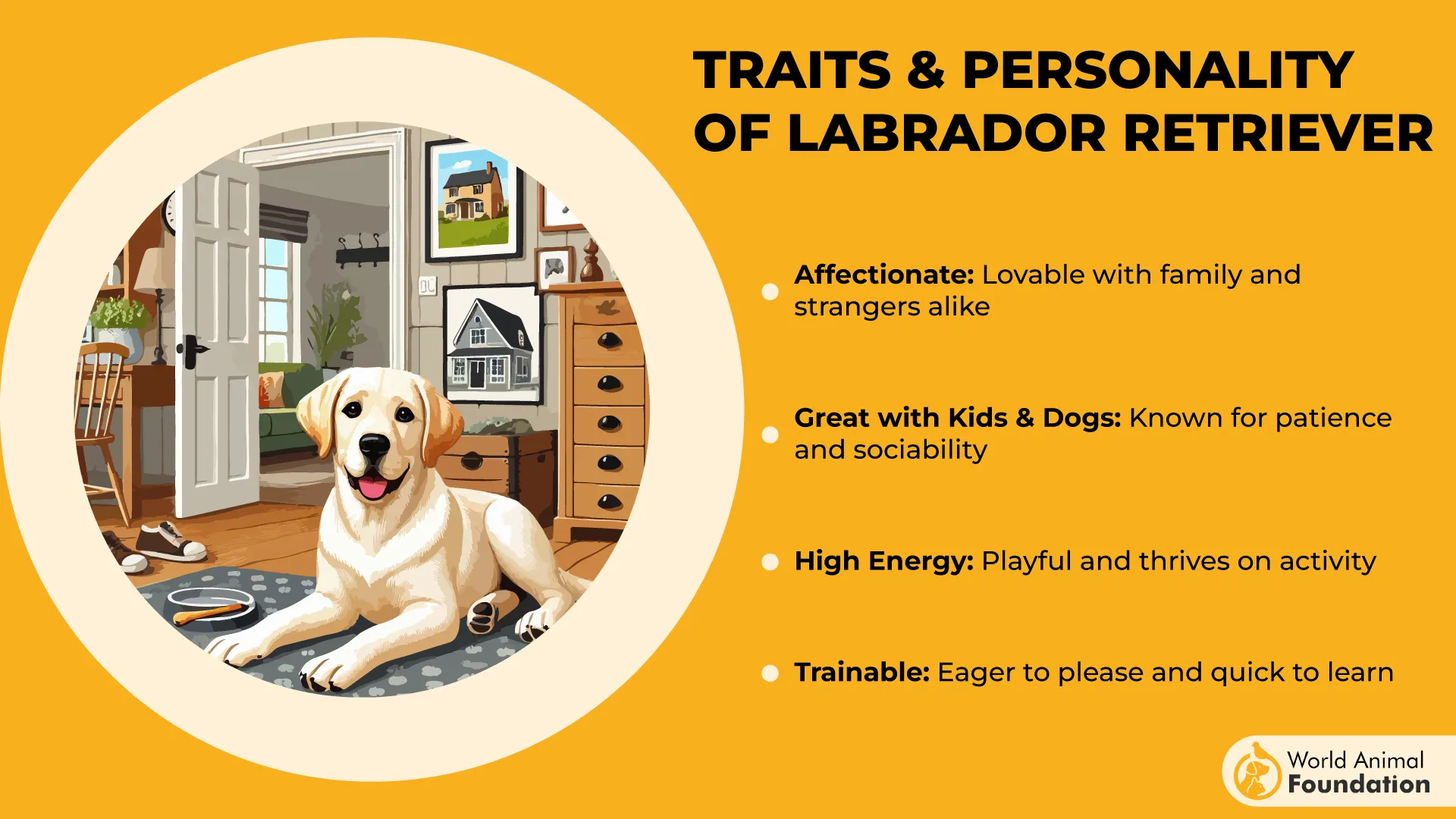
Their intelligence and enthusiasm shine in activities such as obedience trials, search-and-rescue missions, and therapy work. Labs are playful and form strong bonds with people of all ages, thriving on companionship and stimulation.
Did you know? In 2001, a yellow Lab named Endal saved his owner’s life by covering him with a blanket, retrieving a phone, and seeking help—earning him the title Dog of the Millennium.
4. Papillon
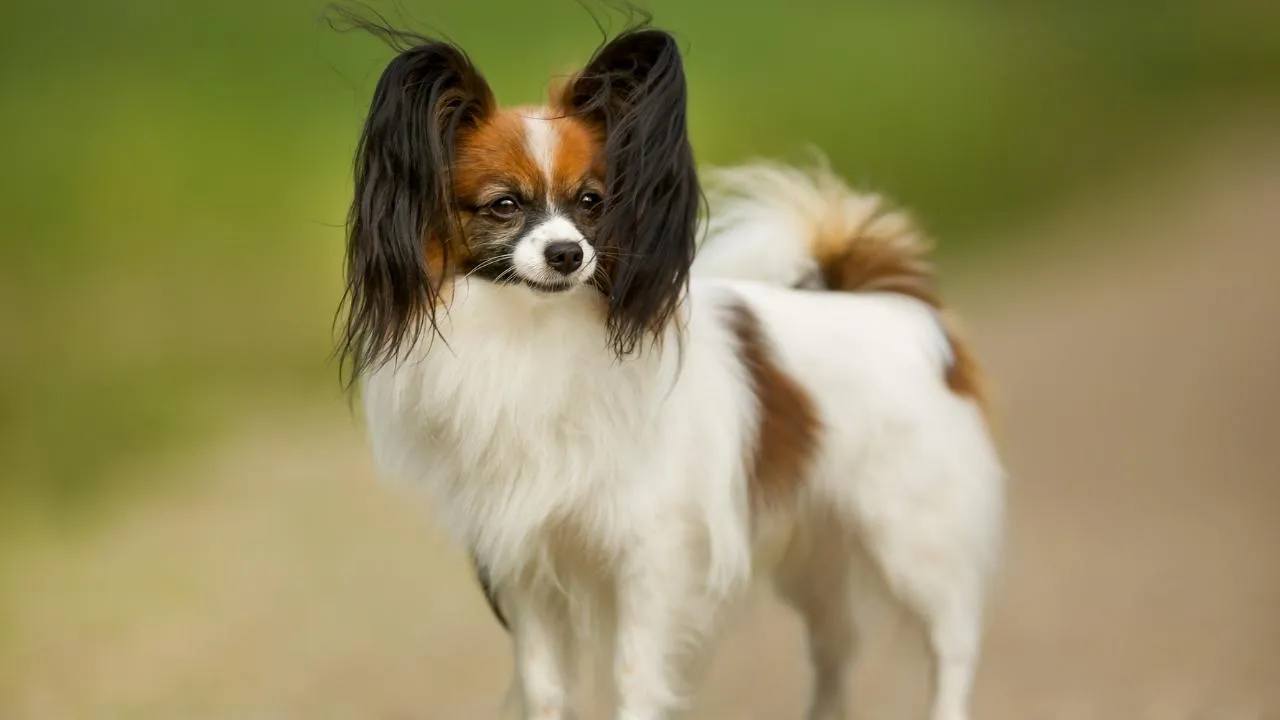
The Papillon, also known as the “Continental Toy Spaniel” or “Epagneul Nain,” is a petite and elegant toy breed developed in France during the 16th century.
Measuring just 8 to 11 inches tall and weighing between 4 to 10 pounds, Papillons are easily recognized by their distinct butterfly-like ears, from which they take their name—“papillon” means “butterfly” in French. There’s also a drop-eared variety called the “Phalene.”
Originally bred as companion dogs and skilled ratters, these dainty canines are surprisingly sturdy and boast a lively, curious demeanor. Their fine, long, silky coat often features a white base with colored patches. With a lifespan of 13 to 16 years, they fit comfortably in various environments, including apartments, thanks to their compact size and adaptable nature.
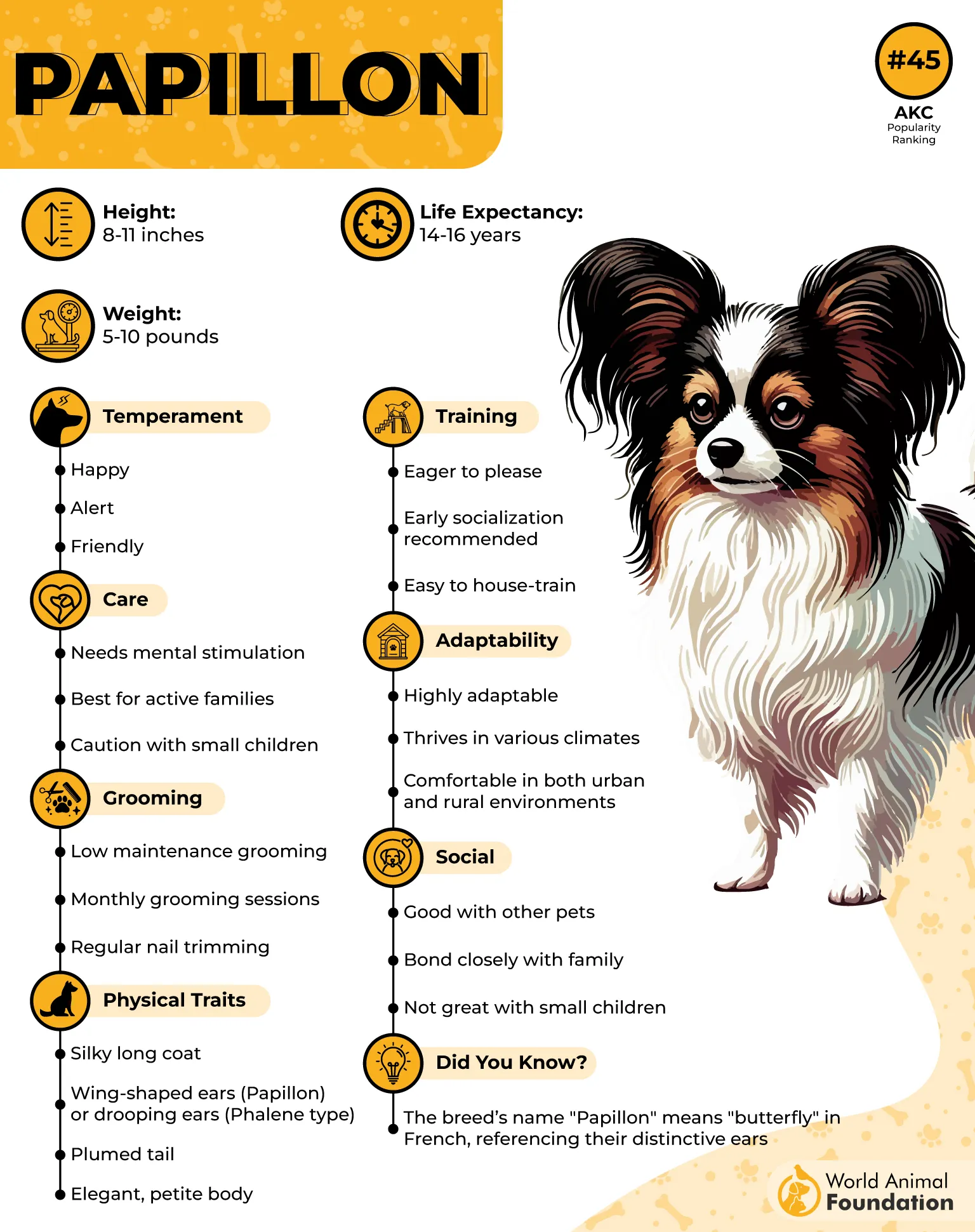
Temperament
Papillons are spirited and bright, with a zest for learning and socializing. Their high intelligence makes them receptive to training, particularly with positive reinforcement. These dogs are affectionate, fearless, and alert—often acting as tiny watchdogs.
Though friendly, they form deep bonds with their families and may suffer from separation anxiety if left alone for long periods. They thrive on interaction and daily mental stimulation.
Did you know? The Papillon frequently appears in classic paintings by masters like Titian, Rubens, and Goya, highlighting its longstanding status as a royal favorite.
5. Shetland Sheepdog
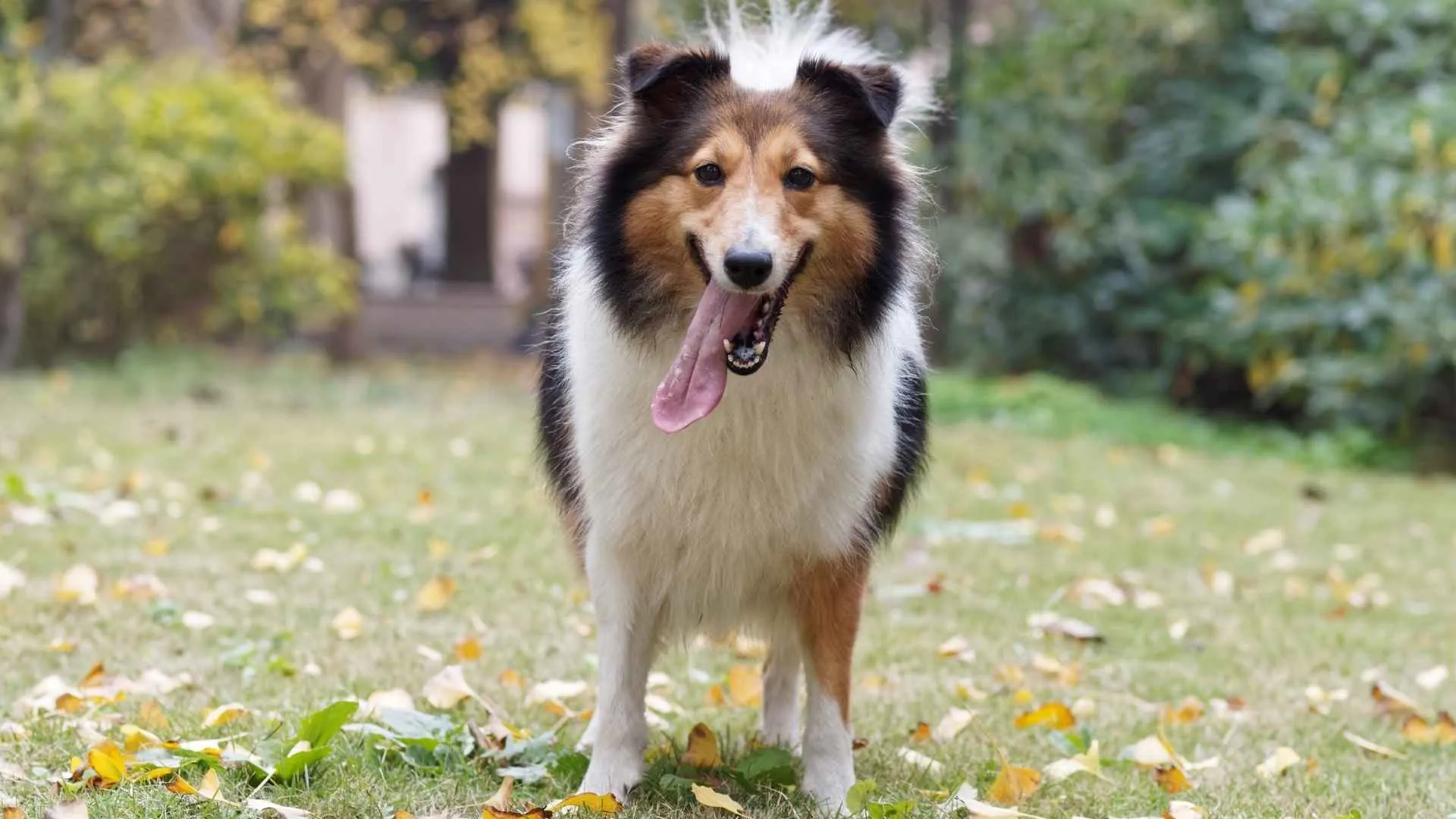
The Shetland Sheepdog, affectionately called the Sheltie, is a compact herding breed hailing from Scotland’s rugged Shetland Islands in the 1800s. Sometimes referred to as the Toy Collie or Little Lassie Dog, this intelligent and graceful breed stands about 13–16 inches tall and weighs between 15–25 pounds.
Shelties are known for their plush double coat, which comes in colors like sable, black, and blue merle. Their luxurious mane-like ruff and expressive eyes give them a noble, endearing look.
With a lifespan of 12–14 years, Shelties are part of the Herding Group and excel in activities like therapy work thanks to their quick learning abilities and exceptional memory. These dogs were originally bred to herd small livestock, making them agile and alert companions.
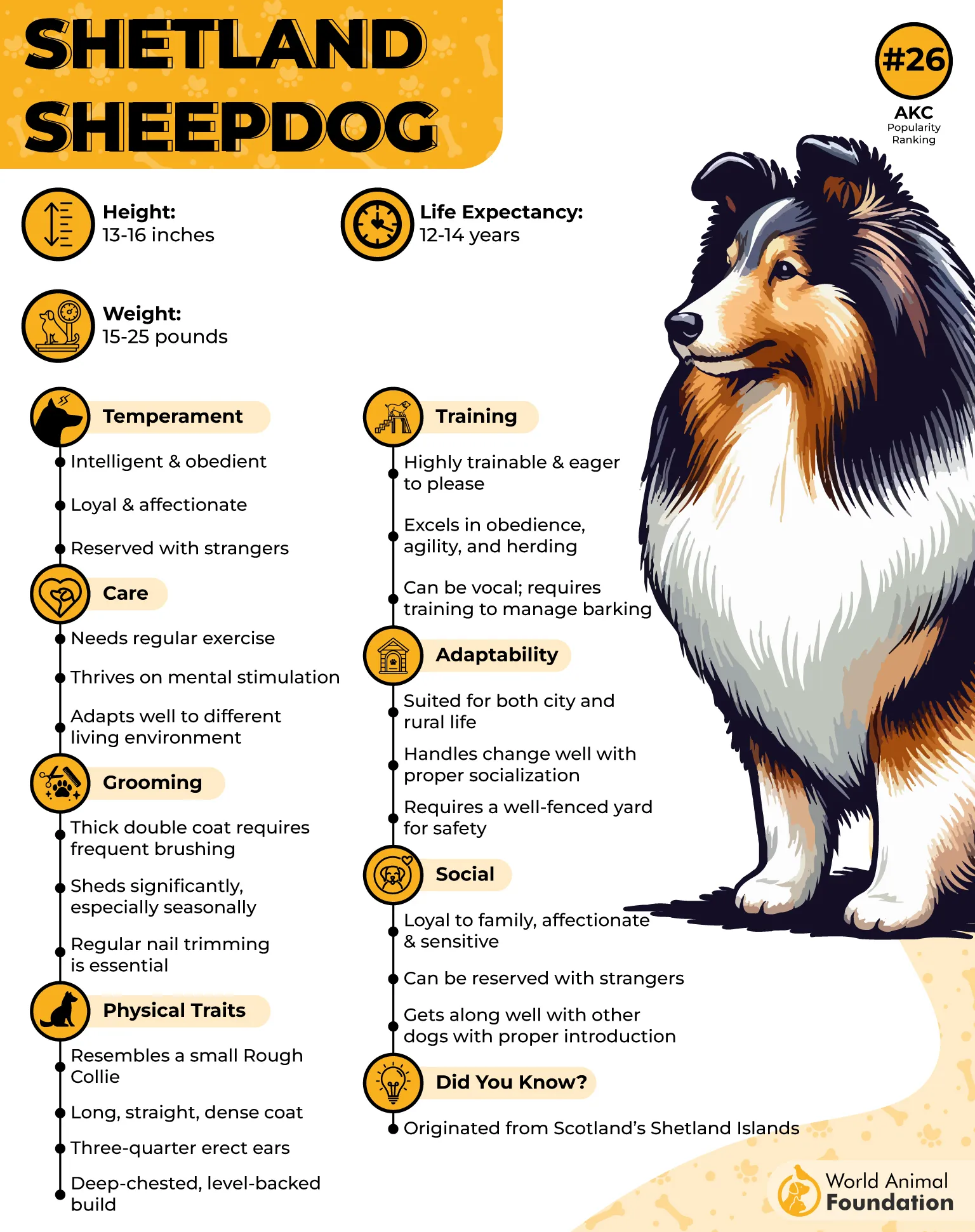
Temperament
Shelties possess a sweet, affectionate nature and are deeply devoted to their families. They are eager to please, emotionally intuitive, and thrive on mental stimulation. While they can be reserved with strangers, they are typically gentle, loyal, and incredibly responsive, which makes training both easy and enjoyable.
Fun Fact: The Shetland Sheepdog can master new commands in just a few repetitions and is ranked sixth among the smartest dog breeds.
6. Australian Shepherd
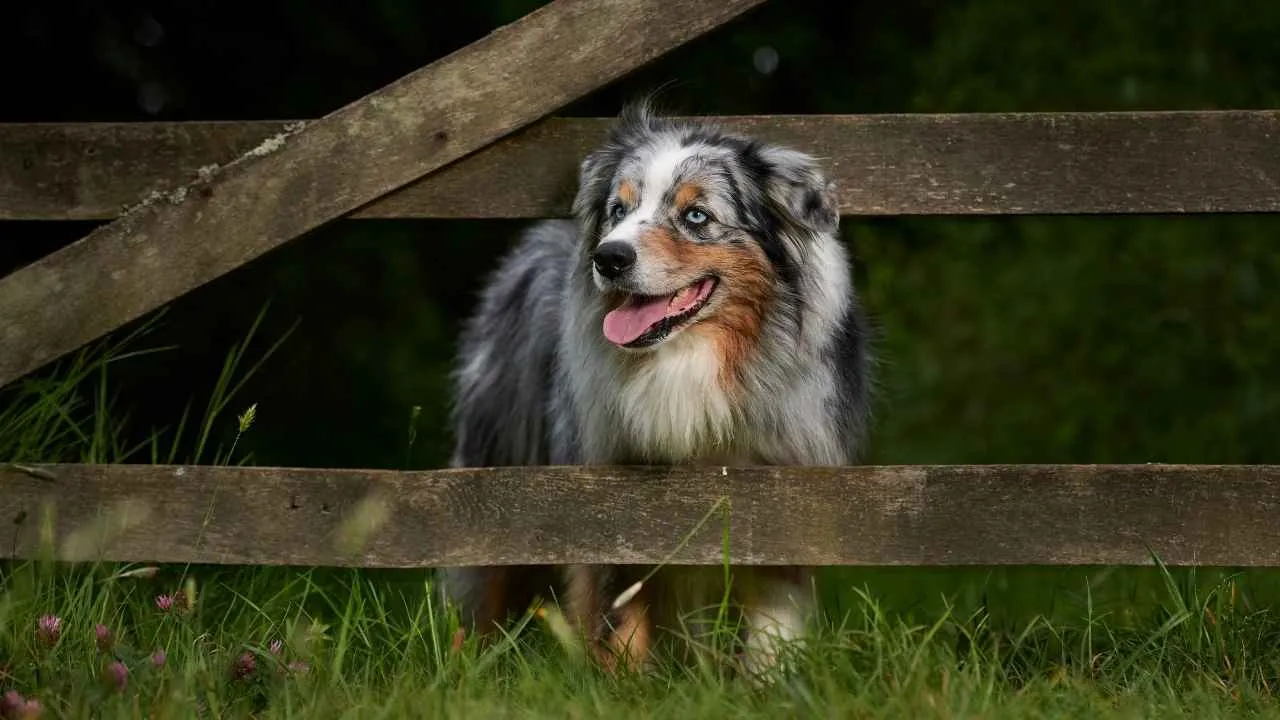
With roots in the western United States—not Australia, despite the name—the Australian Shepherd, or “Aussie,” was originally developed in the late 1800s to herd livestock across rugged terrain. Bred from British herding dogs and refined further by Basque immigrants, the breed became a staple among American ranchers.
These medium-sized, muscular dogs stand 18–23 inches tall and weigh between 40–65 pounds. Their dense, weather-resistant coat appears in striking variations such as black, blue merle, red, and red merle, often with white markings and copper points.
Distinctive features include expressive eyes, sometimes heterochromatic, and a naturally bobbed or docked tail. With a life span of 12–15 years, Australian Shepherds are members of the Herding Group and known for their boundless energy, sharp instincts, and athleticism.

Temperament
Australian Shepherds are lively, intelligent, and deeply loyal dogs that form strong bonds with their families. Their natural suspicion of strangers makes them vigilant, yet not aggressive. Aussies thrive in active households that can meet both their mental and physical stimulation needs.
Eager to please and quick to learn, they respond best to consistent, reward-based training. Their strong herding drive and devotion make them excellent companions for those who enjoy outdoor adventures or dog sports.
Fun Fact: Aussies are closely associated with rodeo culture and are often seen performing tricks and herding demonstrations alongside cowboys..
7. Doberman Pinscher
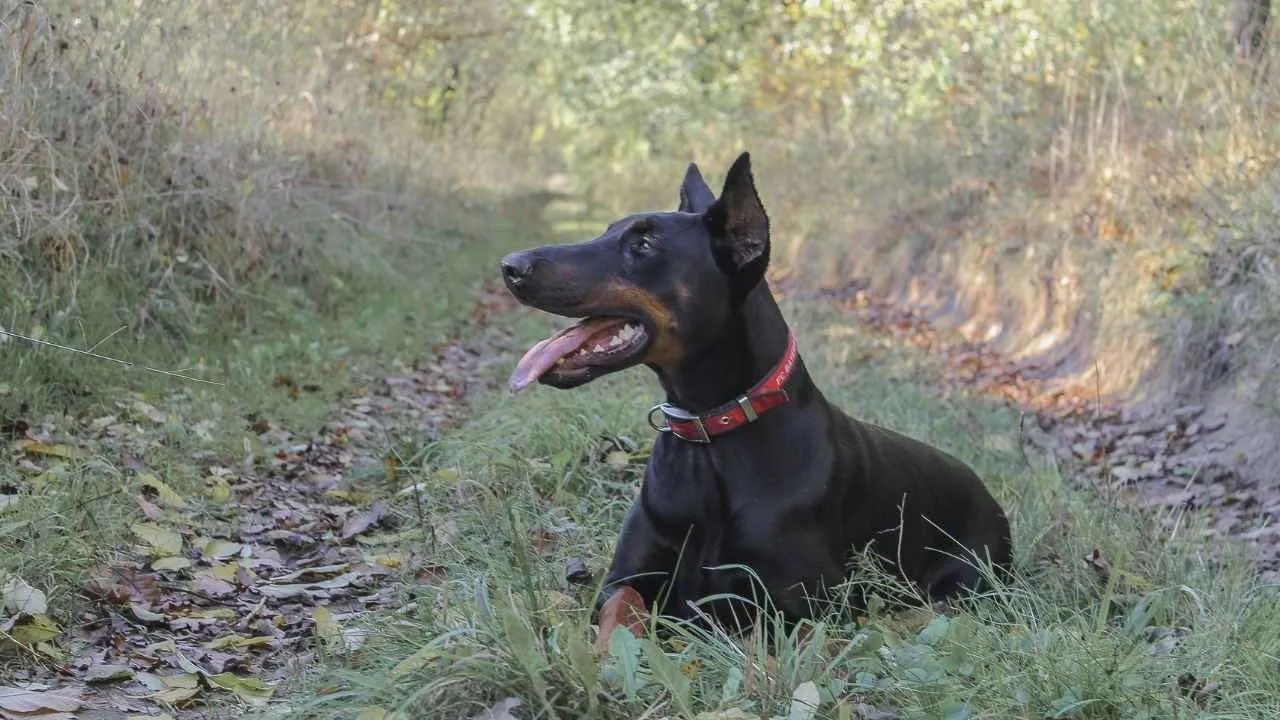
Also known as the Doberman or Dobie, the Doberman Pinscher hails from Apolda, Germany, where it was originally bred in the late 19th century by Karl Friedrich Louis Dobermann—a tax collector who needed a loyal and fearless protector.
Standing between 24 to 28 inches tall and weighing 60 to 100 pounds, this sleek and muscular working breed is recognized for its alert posture, sharp gaze, and streamlined build. Their short, smooth coat comes in colors like black, blue, fawn, and red, often with rust-colored markings.
With a lifespan of 10–12 years, Dobermans are celebrated for their high intelligence and innate drive to learn and obey commands swiftly. They’re top performers in obedience, agility, and protection work.
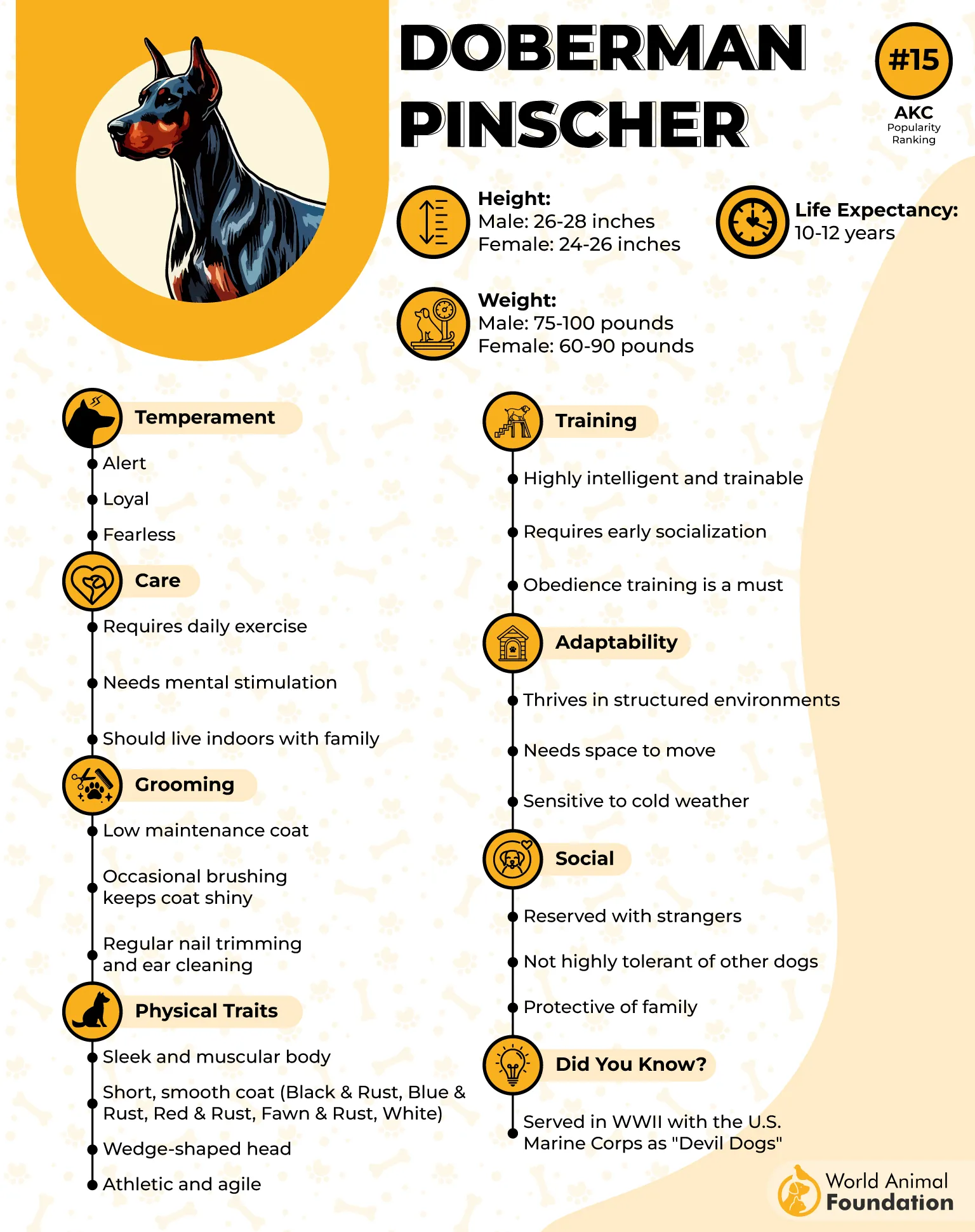
Temperament
Dobermans are energetic, loyal, and exceptionally intelligent. They thrive in homes where they can stay physically and mentally active. Their strong desire to bond with their families means they are quick to understand rules and commands when training is consistent and positive.

They are sensitive to tone and cues, making harsh methods counterproductive. A well-socialized Doberman is both a devoted family companion and a reliable protector.
Did you know? A Doberman named Kurt was the first canine casualty during the Battle of Guam in World War II and is honored at the National War Dog Cemetery.
8. Miniature Schnauzer
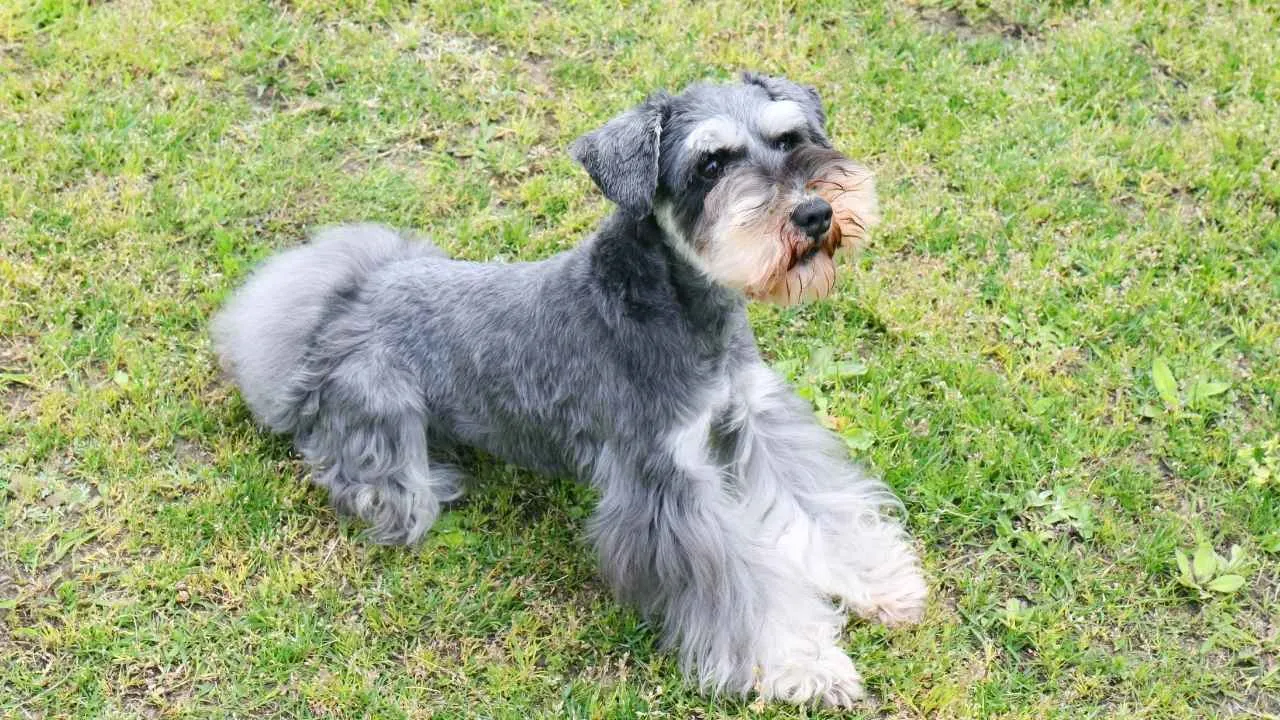
The Miniature Schnauzer, often called “Mini Schnauzer,” is a spirited and intelligent small breed known for its distinctive beard and expressive eyebrows.
Developed in Germany in the late 19th century by crossing the Standard Schnauzer with Affenpinschers and Poodles, this breed stands 12–14 inches tall and weighs 13–15 pounds.
It features a wiry double coat commonly seen in salt-and-pepper, black, or black and silver, requiring regular grooming to maintain its characteristic appearance. Its deep-set dark eyes, erect ears (often cropped), and bold square muzzle give the breed an alert and wise look.
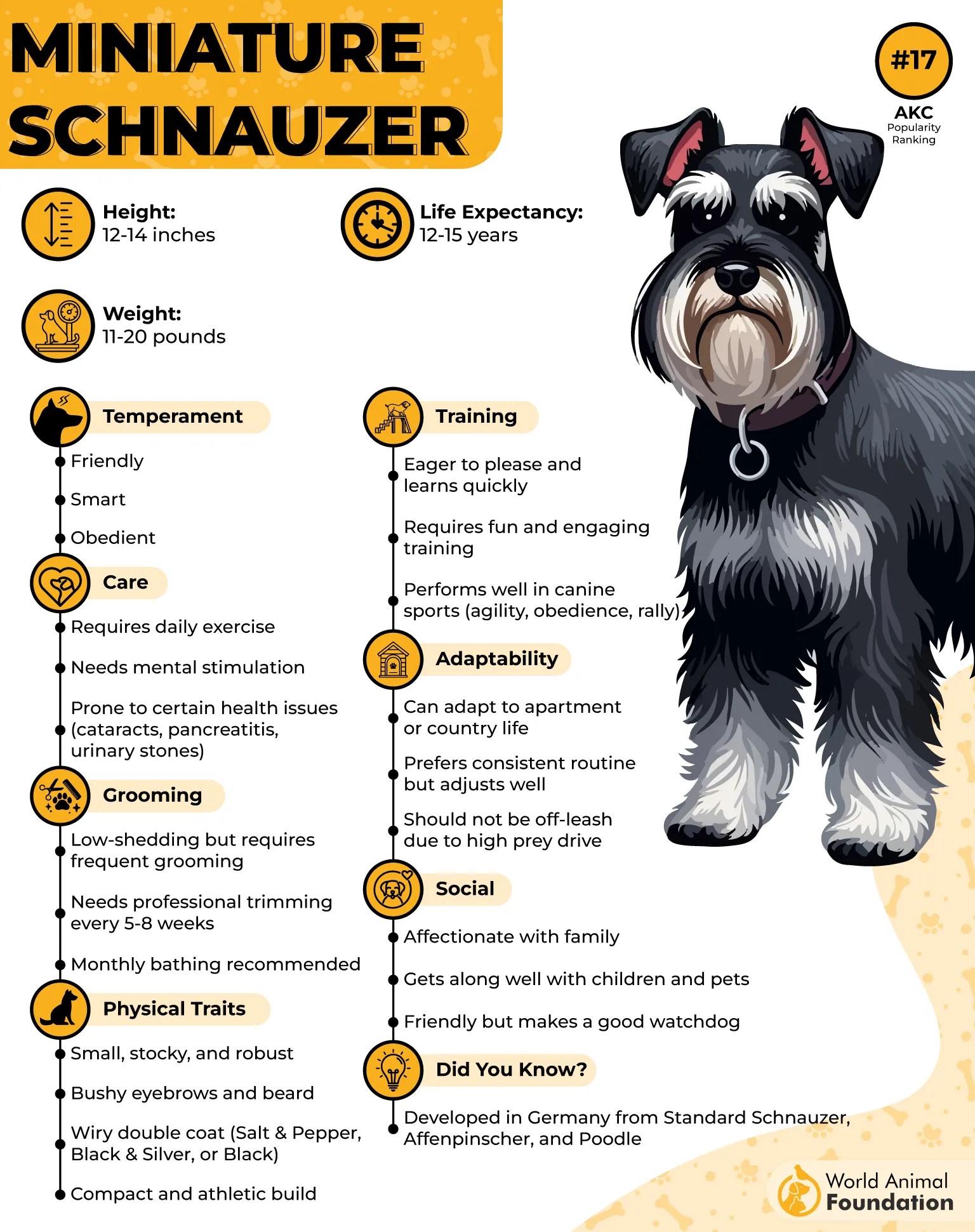
Temperament
Miniature Schnauzers are bright, playful, and eager to learn. Their curiosity and quick wit make them excellent participants in obedience and agility activities. They form strong bonds with their families and thrive on interaction and stimulation.
Though sometimes vocal and feisty with unfamiliar dogs, they’re dependable, adaptable companions well-suited for various living environments—from countryside to city apartments. They’re naturally inclined to be watchful and protective without being overly aggressive.
Fun Fact: Miniature Schnauzers may not have been bred to go underground for prey, but many excel at Earthdog trials and dog sports like Barn Hunt.
9. German Shepherd
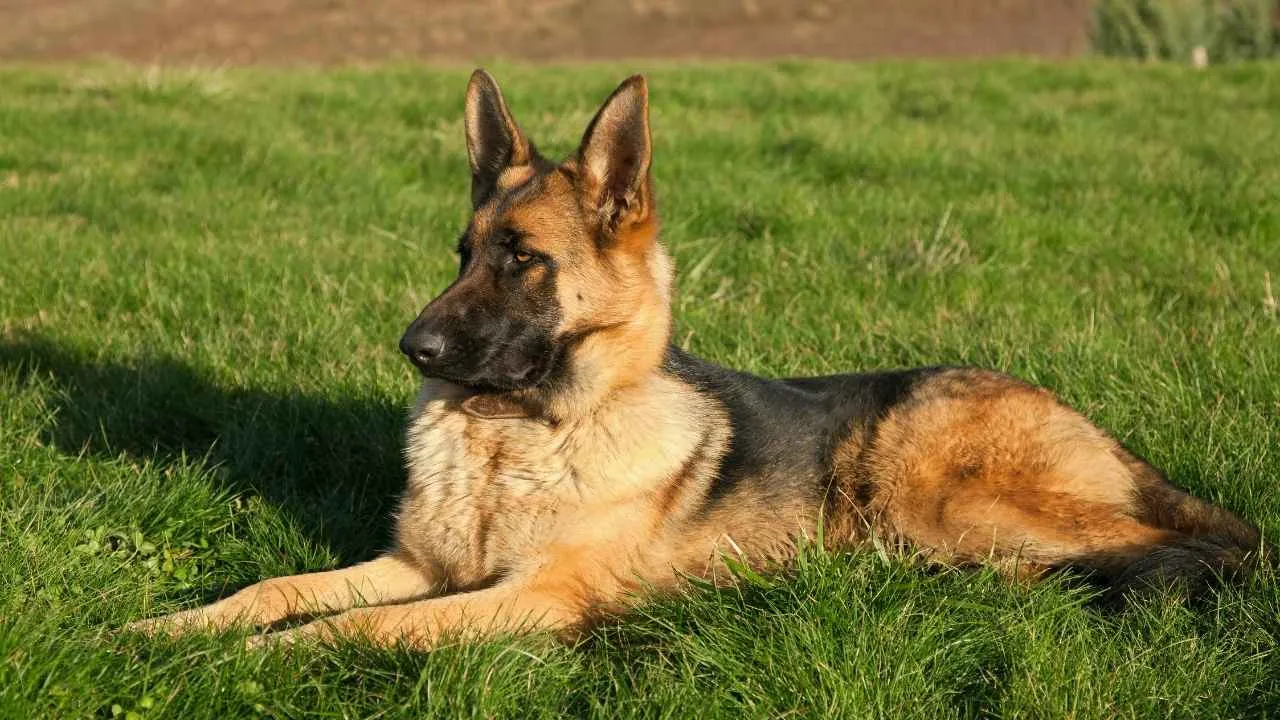
Also known as the Alsatian, the German Shepherd is a large, powerfully built dog developed in Germany for herding and guarding livestock. With a height ranging between 22–26 inches and weight from 50–90 pounds, this herding breed is well-muscled and agile.
It features a dense double coat, typically in black and tan or black and gray. Their athleticism, sharp instincts, and trainability have made them a go-to choice for military, police, and service work worldwide.
Bred with intelligence and obedience in mind, they rank among the top three smartest dog breeds globally. German Shepherds generally live 12–14 years and have become synonymous with versatility, often excelling in competitive sports and therapy roles.

Temperament
These intelligent breeds are loyal and energetic companions. They tend to be reserved around strangers but affectionate with family members. This breed thrives on mental and physical stimulation, making training not only essential but also enjoyable for them.
While not naturally aggressive, their protective instincts may make them cautious in new social situations, which is why early socialization is extremely important. These dogs form deep bonds and often experience separation anxiety if left alone for extended periods.
Fun Fact: A German Shepherd named Orient guided Bill Irwin, the first blind hiker, across the Appalachian Trail in 1990.
Conclusion
Dogs with exceptional learning abilities offer more than clever tricks—they embody intelligence, loyalty, and adaptability that enrich every aspect of companionship. Whether you’re hoping to compete in dog sports, develop a reliable working partner, or simply raise a well-mannered pet, breeds that thrive in obedience training are invaluable. From the intuitive English Springer Spaniel to the focused and energetic Australian Cattle Dogs, many of these quick learners shine in roles such as service or search and rescue dogs, showcasing not just their intelligence but their dedication.
However, brilliance needs guidance. A good dog trainer can help unlock your pet’s full potential, reinforcing positive behavior and building a strong bond. With consistency, the right breed, and structured training, even first-time owners can raise dogs who are attentive, responsive, and eager to please. Choosing from these impressively quick learners means welcoming a companion ready to engage, adapt, and thrive in both your daily routines and life’s adventures.


